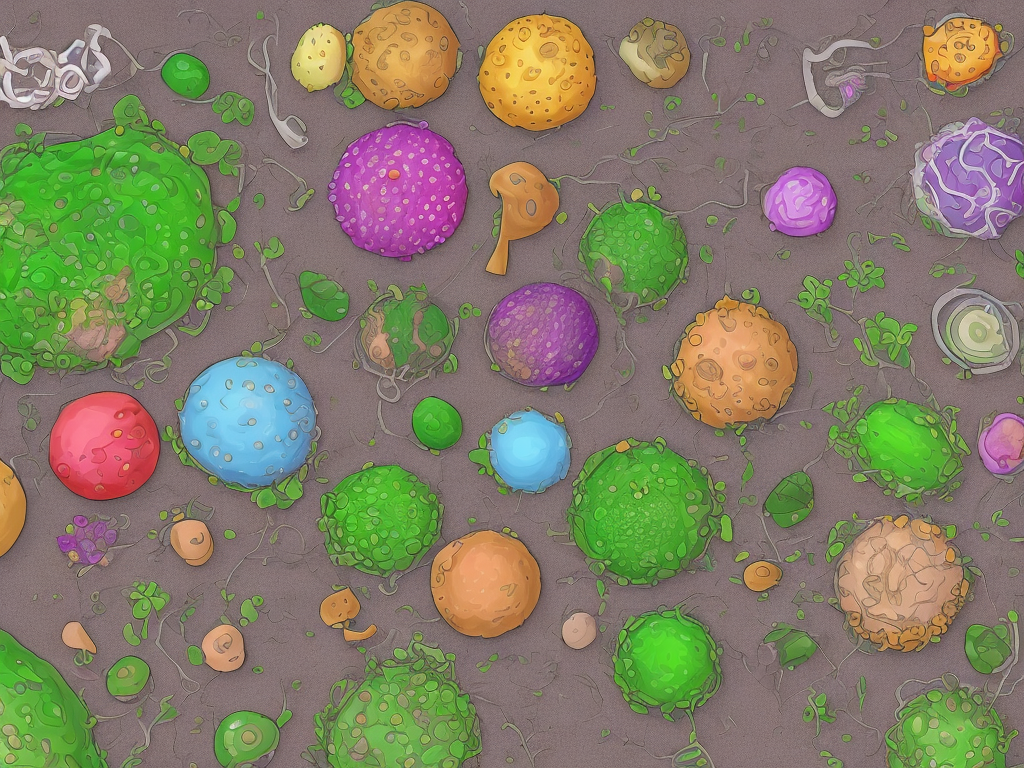
Cells are the basic unit of life. Every organism, be it a single-celled organism or a complex multicellular organism, is composed of cells that are capable of performing various functions. Although there are different types of cells, animal and plant cells are the most well-known. While there are many similarities between these two types of cells, there are also several key differences in their structure and function.
The first and most obvious difference between animal cells and plant cells is their physical appearance. Animal cells are generally round, irregular, or oval in shape, while plant cells are more rectangular or box-like due to the presence of a cell wall. Additionally, plant cells are generally larger than animal cells. While the size of animal cells can vary greatly depending on the type of animal, plant cells are typically between 10 and 100 micrometers in diameter.
One of the most critical differences between animal and plant cells is the presence or absence of certain organelles. Organelles are specialized structures within the cell that carry out specific functions necessary for the survival of the cell. Animal cells have all typical organelles, including a nucleus, mitochondria, ribosomes, endoplasmic reticulum, Golgi apparatus, lysosomes, and peroxisomes. On the other hand, plant cells contain all of the same organelles as animal cells but also have several unique organelles that are only found in plants.
One of these unique organelles is the chloroplast. Chloroplasts are responsible for photosynthesis, the process by which plants create energy. Chloroplasts contain chlorophyll, a pigment that absorbs light energy and converts it into chemical energy. Plant cells also have a cell wall, which is surrounded by a plasma membrane. The cell wall provides additional rigidity and support to the plant cell. Animal cells do not have a cell wall.
Another difference between animal and plant cells is the way that they store energy. In animal cells, energy is stored in the form of glycogen, while in plant cells, energy is stored in the form of starch. Both of these molecules are complex carbohydrates that are broken down during cellular respiration to create ATP, the primary energy source for cells.
When it comes to cellular respiration, the process by which cells generate energy, there are some differences in the way that animal and plant cells do it. Cellular respiration in animal cells takes place in the mitochondria, where glucose and oxygen are converted into carbon dioxide and water, releasing energy in the process. In plant cells, cellular respiration also takes place in the mitochondria, but photosynthesis also occurs in the chloroplasts. During photosynthesis, carbon dioxide and water are converted into glucose and oxygen using energy from the sun. It's important to note that while plant cells can generate their energy through photosynthesis, they still require cellular respiration to break down glucose and provide energy to the rest of their cells.
The final difference between animal and plant cells is the way that they reproduce. Animal cells reproduce through a process called mitosis, where a single parent cell divides into two identical daughter cells. Plant cells, on the other hand, reproduce through a process called mitosis, but they also have another method of reproduction called meiosis. Meiosis is a type of cell division that results in the formation of four haploid daughter cells, each with half the number of chromosomes as the parent cell. This process is essential for the creation of gametes, such as egg and sperm cells.
In conclusion, while animal and plant cells share many similarities, such as the presence of a nucleus and mitochondria, there are also several key differences between them. The presence of chloroplasts and a cell wall are unique features of plant cells, while animal cells store energy as glycogen and reproduce through mitosis only. Understanding these differences is essential for anyone interested in biology as they show how diverse life can be.
 Self-Instruct
Self-Instruct